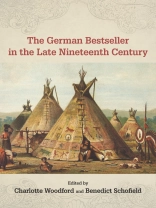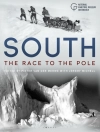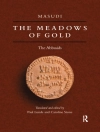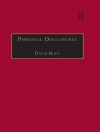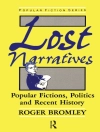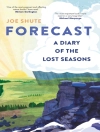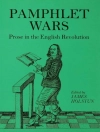A much-needed look at the fiction that was actually read by masses of Germans in the late nineteenth century, and the conditions of its publication and reception.
The late nineteenth century was a crucial period for the development of German fiction. Political unification and industrialization were accompanied by the rise of a mass market for German literature, and with it the beginnings ofthe German bestseller.Offering escape, romance, or adventure, as well as insights into the modern world, nineteenth-century bestsellers often captured the imagination of readers well into the twentieth century and beyond. However, many have been neglected by scholars.
This volume offers new readings of literary realism by focusing not on the accepted intellectual canon but on commercially successful fiction in its material and social contexts. It investigates bestsellers from writers such as Freytag, Dahn, Jensen, Raabe, Viebig, Stifter, Auerbach, Storm, Möllhausen, Marlitt, Suttner, and Thomas Mann. The contributions examine the aesthetic strategies that made the works sucha success, and writers’ attempts to appeal simultaneously on different levels to different readers. Bestselling writers often sought to accommodate the expectations of publishers and the marketplace, while preserving some sense ofartistic integrity. This volume sheds light on the important effect of the mass market on the writing not just of popular works, but of German prose fiction on all levels.
Contributors: Christiane Arndt, Caroline Bland, Elizabeth Boa, Anita Bunyan, Katrin Kohl, Todd Kontje, Peter C. Pfeiffer, Nicholas Saul, Benedict Schofield, Ernest Schonfield, Martin Swales, Charlotte Woodford.
Charlotte Woodford is Lecturer in German and Directorof Studies in Modern Languages at Selwyn College, University of Cambridge. Benedict Schofield is Senior Lecturer in German and Head of the Department of German at King’s College London.
विषयसूची
Introduction: German Fiction and the Marketplace in the Nineteenth Century – Charlotte Woodford
Gustav Freytag’s Soll und Haben: Politics, Aesthetics, and the Bestseller – Benedict Schofield
Felix Dahn’s Ein Kampf um Rom: Historical Fiction as Melodrama – Todd Kontje
Wilhelm Jensen and Wilhelm Raabe: Literary Value, Evolutionary Aesthetics, and Competition in the Marketplace – Nicholas Saul
Clara Viebig: Using the Genres of Heimatkunst und Großstadtroman to Create Bestselling Novels – Caroline Bland
Buddenbrooks as Bestseller – Ernest Schonfield
Homeliness and Otherness: Reflections on Stifter’s Bergkristall – Martin Swales
Berthold Auerbach’s Schwarzwälder Dorfgeschichten: Political and Religious Contexts of a Nineteenth-Century Bestseller – Anita Bunyan
Theodor Storm’s Der Schimmelreiter: Schauerralismus or Gothic Realism in the Family Periodical – Christiane Arndt
Selling the Experience of the New World: Balduin Möllhausen’s Novellistic Imagination of America – Peter Pfeiffer
E. Marlitt’s Bestselling Poetics – Katrin Kohl
Bertha von Suttner’s Die Waffen nieder! and Gabriele Reuter’s Aus guter Familie: Sentimentality and Social Criticism – Charlotte Woodford
Taking Sex to Market: Tagebuch einer Verlorenen: Von einer Toten and Josefine Mutzenbacher, Die Lebensgeschichte einer wienerischen Dirne, von ihr selbst erzählt – Elizabeth Boa
Works Cited
Notes on the Contributors
Index
लेखक के बारे में
Benedict Schofield is Reader in German at King’s College London.
